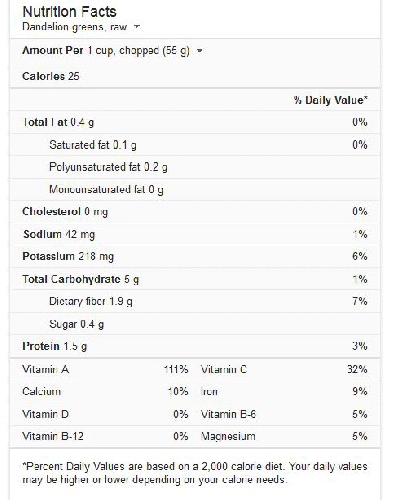Dandelions for food
Eating dandelions can be delicious and nutritious.

As I look out my office window, I see grass littered with giant yellow dandelion flowers. It makes me hungry. For most people, dandelions are a nuisance weed to be battled in lawns between May and August. There’s another side to dandelions, though, and you may want to think twice before chopping them to bits with the lawnmower.
The dandelion (Taraxacum officinale) is an abundant “weed” plant that also happens to be edible. In fact, nearly the entire plant can be consumed in one way or another. The only inedible part is the stem, which contains a very bitter, milky substance. Let’s start at the top: the flowers. Dandelion flowers are a great addition to pancakes or fritters. Just add one-half to three-quarter cup of plucked flowers to your regular pancake or fritter mix. Flowers can be plucked fresh, or dried and then plucked. Choose large heads that are fully in flower. Gently pull the petals away from the green base. This is a great activity for kids who want to help in the kitchen. The flowers are a good source of antioxidants as well as vitamins A and B12.
Next, the greens. Young greens picked before the plant flowers are the best, but they can be picked and eaten year-round. Young, more tender greens can be used fresh in salads, or chopped and used in place of chives on top of mashed or baked potatoes. They can also be cooked and used in similar ways as spinach, such as sautéed, stir-fried or creamed. One cup of chopped dandelion leafs supply a good amount of potassium, vitamin A and vitamin C. They also contain a fair amount of sodium naturally, so it is also a great herb to use as flavoring instead of table salt.
Finally, the root. While this is probably the least desirable part of the plant to eat due to the labor intensive process to obtain and clean, you may want to try the root just out of curiosity. To get the whole root out of the ground you’ll need a long, narrow digging tool. Once out of the ground, thoroughly wash the root and peel it using your fingernail or a rough scouring pad. Boil roots for 10-20 minutes, as this rids of some of the bitterness. Then add the root to soups, stews or other dishes as you would with other vegetables. Dandelion roots have little flavor on their own, so are best used in combination with other vegetables.
As with any vegetable, dandelions need to be washed and properly handled to prevent foodborne illness. Leafs and roots should always be rinsed under cool, running water before consuming. Flowers are difficult to wash, so always try to pick flowers that are clean of debris and bugs. The most important thing about dandelions and other edible wild plants is to only pick in areas that are not subject to herbicides, pesticides, fertilizers, heavy metals or other forms of chemical pollution. No matter how many times you wash them, there is no way to fully know whether or not a chemical has been eliminated. If in doubt, don’t eat it.

The next time you see your lawn full of dandelions, Michigan State University Extension recommends taking a taste of this free, abundant and nutritious plant before starting your lawnmower. Collecting wild plants for food is a great way to get fresh air and physical activity in your day.



 Print
Print Email
Email




